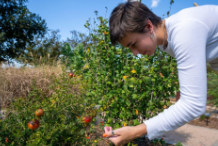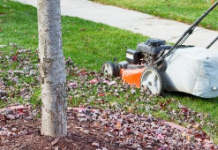During the growing season leaves are making food for trees through photosynthesis. Chlorophyll found in the leaves captures the energy of the sun and gives trees their green pigment. As the amount of daylight decreases and the temperature drops heading into fall, chlorophyll production slows and the green color of leaves begins to fade. Xanthophylls and carotenes which are responsible for the orange and yellow pigment are always present in the leaves but only become visible as the green fades. Tannins are also present throughout the growing season and produce brown colors. Anthocyanins create red and purple pigments and are primarily produced during the fall.
The timing and intensity of the fall display varies based on types of trees and the environmental conditions. Different species will have differing levels of these pigments. Certain types of oaks and maples have brilliant fall foliage displays with varied colors while some trees will display primarily one color.
Temperature, soil moisture, rainfall and amount of sunlight impact the intensity and duration of the color. Warm, sunny days encourage photosynthesis which means sugar accumulation in the leaves. Cool nights slow respiration which helps conserve sugars. The combination of these factors results in a brilliant foliage display. Cloudy days and warm nights reduce sugar accumulation and consequently result in less vibrant leaf colors. Heavy rain, hot and dry summers, and frosts/freezes all have a negative effect on the vibrancy of fall colors and length of time they remain.
During this time, an abscission layer develops where the leaf petiole attaches to the branch. This barrier prevents sugars from being transported out of the leaf to the rest of the tree. Once the abscission layer is present, the leaf is ready to drop to the ground with the help of a windy gust or rainy day.
If you’ve noticed the fall display in your landscape changes from year to year pay attention to the weather patterns and this should give you an explanation as to why.
Cynthia Domenghini, Extension Agent




